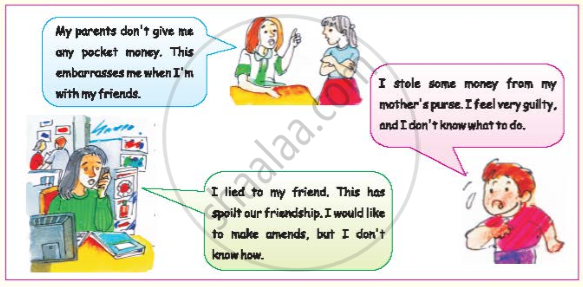Advertisements
Advertisements
प्रश्न
Based on your reading of the story, answer the following question by choosing
the correct option.
The narrator says that life has no geographical bounds implying that,
विकल्प
human beings are essentially the same everywhere.
boundaries exist only on maps.
one should work towards the good of mankind.
he was happy to travel to other countries.
उत्तर
human beings are essentially the same everywhere.
APPEARS IN
संबंधित प्रश्न
Answer the following questions briefly:
(a) In 1953, Hooper was a favoured young man. Explain.
(b) They said that they would create a desk job for Hooper at headquarters.
- Who are ‘they’?
- Why did they decide to do this?
(c) Duke was an extraordinary dog. What special qualities did he exhibit to justify this? Discuss.
(d) What problems did Chuck present when he returned to the company headquarters?
(e) Why do you think Charles Hooper’s appointment as Assistant National Sales Manager is considered to be a tribute to Duke?
Can you match the following?
(a) Something that lives for one year biennial
(b) Something that lives for about two years perennial
(c) Something that lives for more than two years annual
Answer the following questions:
Bicker’ means ‘to quarrel’. Why does the poet use this word here?
The brook appears to be a symbol for life. Pick out examples of parallelism
between life and the brook from the poem.
The next part of the story has been given below. Punctuate it, remember to use quotation marks (" ")when people speak.
they were dressed strangely in eccentric clothing shorts shirts and different garments they carried in their hands their bodies from throat to ankle were hidden by black cloaks the boy who controlled them came forward vaulted on to the platform with his cloak flying and peered into what was almost complete darkness whereas the man with the trumpet ralph sensing his sun blindness answered him theres no man with a trumpet only me the boy came close and peered down at ralph screwing up his face as he did so he turned quickly isnt there a ship then he was tall thin and bony his face was crumpled and freckled out of his face stared two light blue eyes frustrated now and turning or ready to turn to anger isnt there a man here ralph spoke to his back no we are having a meeting come and join us
Used to and Would
(A) Read the passage given below. Substitute ‘used to’ with ‘would’ wherever appropriate so that the passage reads better.
When I was a student, I used to visit the library frequently. The librarian was a kind man and he used to help me select my books. There used to be a small tea shop near the library. After spending a few hours in the reading room of the library, 1 used to go to this tea shop to meet my friends. There used to be an old waiter who kept a corner table reserved for us.
No. This is because they are used differently.
Read the passage again and complete the sentences below.
1. ‘used to’ is used to describe _______ in the present as well as situations that existed in the past.
2. ‘would’ is used to describe only _______ in the past.
(B) Think of the days when you were eight years old. Write down four or five things you would do or used to do or be. Make sentences like those in the box. Share your experiences with your partner.
In pairs, match A and B to produce likely phrases.
| A | B |
| A(n)
Some A pair of A piece of |
horse |
There is sometimes more than one sensible combination as in the example.

In groups of four , use the language used in Question 5 to give advice in the following situations :

Copy the worksheet in your notebooks and work in pairs to complete the worksheet to know all about yourself. This will enable you to discover your hidden strengths, work on your weaknesses, and develop your personality.
Johari Window Work Sheet
| A | B | C |
| How I describe myself? | How I describe my friend ? | How my friend describes me? (Fill this part from what the friend says about you) |
|
|
____________ ____________ _____________ ___________ _____________ ______________ ______________ ______________ |
On the basis of your reading of the exctract on Chess , complete the following table with your partner .
| Figure | Name | Order of importance | Function | Significance |
 |
||||
 |
||||
 |
||||
 |
||||
 |
||||
 |
